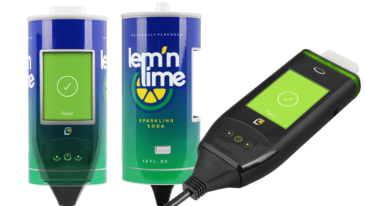
If you are required by a court to install an ignition interlock device (IID) andyou are subsequently pulled over driving a vehicle without an IID equipped, youwill potentially be facing serious legal penalties. Many people who arerequired to utilize an ignition interlock device have a number of questionsabout the programs. Some of these questions revolve around non-compliance withan IID program’s requirements.
In this article, we’ll explore one of the most common questions that people have,which is what happens if they are pulled over without their interlock device.We’ll talk about what ignition interlock devices are, why they are used, andhow you can avoid getting pulled over without your device in the first place.While you should keep in mind that the laws in your state combined with yourignition interlock program requirements will determine what the penalty is fornon-compliance, operating a vehicle without an ignition interlock installed isa very serious offense. As such, regardless of where you live or what type ofprogram you are enrolled it, you should never operate a vehicle without an IIDinstalled if you are required to use one.
What is an Ignition Interlock Device?
Ignition interlock devices are a device that is integrated into your vehicle’s ignitionand is used to detect the presence of alcohol. IID’s work by preventing a carfrom starting before a breath sample is successfully submitted and passed. Afailed breath sample may be reported to your IID provider, who may then reportit to the agency that is overseeing your program. A failed sample will alsoresult in a failure to start your car.
The idea behind an ignition interlock device is to allow individuals that have beenconvicted of driving under the influence (DUI) or driving while intoxicated(DWI) to continue using their vehicle under strict conditions. IID’s help toreduce the high rates of recidivism associated with DUI convictions, while alsoallowing individuals who have made a mistake in the past to continue throughtheir daily lives while ensuring that they operate the vehicle safely. Safetyis one of the top priorities of an IID, as they improve the safety of both thedriver themselves and other drivers on the road.
What Happens if You Are Non-Compliant?
If you are found to be non-compliant with your IID’s program requirements, youwill most likely face penalties. One of the ways that you would be clearlynon-compliant with any IID program’s requirements is by operating a vehicle thatisn’t equipped with a device. Although it is difficult to say with anycertainty what the penalty is for non-compliance in your particular situation,given differences between program requirements, state law, and your ownpersonal history, it is certain that being pulled over without an ignitioninterlock device installed will result in severe penalties. Being pulled over without interlockdevice often results in a revocation of driving privileges for theduration of the original suspension. In some cases, being pulled over withoutyour interlock device can result in a separate criminal charge.
Strategies for Avoiding Non-Compliance
There are a number of ways that you can end up being found non-compliant with yourprogram’s requirements. One of these is by operating a vehicle without anignition interlock device. Others include failing an ignition interlock test orfailing to perform a rolling retest when one is required. The easiest way toavoid any of these outcomes is to closely follow the instructions for operatingyour device. You will also want to fully understand your program’s requirementsand adhere to them at all times.
Let’s take being pulled over without an interlock device as an example. This is aclear violation of your program’s requirements. This often occurs in situationswhere someone who is required to operate a vehicle equipped with an IID borrowsa family member’s car. The simple answer to avoiding this situation is to notoperate any vehicle that isn’t equipped with an IID for the duration of yourprogram. If you have an emergency where you have to be somewhere and the carequipped with an IID isn’t functioning, have a backup plan already in place sothat you don’t feel like you have to make a bad decision at the moment. Thiscan include utilizing a ride-sharing service, calling a cab, using publictransportation, or getting a ride with a friend or neighbor.
Adhering closely to your program’s requirements is essential. This is not only so thatyou avoid any further legal trouble, but also to ensure the safety of yourselfand others on the road. If you are having difficulty with your interlockdevice, be sure to speak with customer service or bring it to the servicecenter you work with. Problems with your device won’t be considered a justifiablereason for you to operate a vehicle without a device installed, so be sure toplan ahead so that you can navigate emergencies without violating yourprogram’s requirements.


